
For a while now I have been running my Reinventing Fantasy Races series of posts in which I try to come up with unusual and unconventional approaches to common fantasy tropes. Over the last few months several people mentioned that I have a good deal of material out there, that could potentially be connected and bundled together into some sort of a custom fantasy setting. I kinda like this idea, but most of the stuff I have written up until now is not very cohesive. In fact many posts present several contradictory ideas that wouldn’t necessarily fit together. I like the freedom to just spitball, and subvert fantasy tropes in vacuum one at a time, so I don’t really want to have some over-arcing meta-narrative or setting encompassing everything.
To me, a setting have to be at least somewhat cohesive, have some sort of shared history/mythology and be finite. I’m not really in the business of building some sort of super-setting that can be used to tell every story, regardless of it’s mood, theme and scope. I’m more after something narrower and specific, as those kinds of settings tend to be most interesting. For example one of my favorite D&D settings is Darksun which is a a rather narrowly defined subsection of the D&D universe which gives it a rather unique flavor. I’m more into creating something like that.
If you bear with me, the next couple of post in this series will be an attempt to create something I dubbed Project Ravenflight. Why? Well, one of the reasons is that I found this random, blank map that kinda looks like a bird in mid flight pooping on a hot-dog:
So I figured the larger island could be called Raven Island, which was historically home to some kind of Ravenfolk or some such. And since both Ravenholm and Ravenloft were already taken and Ravenpoop seemed to silly, so I went with Ravenflight… Don’t judge. Here is the same map, with some additional detail added on top:
Conceptually the project is still about “Reinventing Fantasy Races” and subverting tropes. But this time I will try to have some over-arcing world building elements that will connect the next 2-3 posts in the series into something of a setting, based around the above map. I’m going to reuse some of the ideas I already outlined in previous posts, and add some new ones while trying to maintain somewhat modular structure. So if you like a particular idea you can feel free to rip it out of the larger setting and use it elsewhere.
Ravenfolk (My Halflings are Different)
One interesting aspect of Halflings is that they are frequently depicted as subaltern people. They have no nations or empires of their own, but instead live amongst other races. Because they look exactly like humans, albeit of diminutive stature they integrate into their societies quite easily. Thieflings are also depicted as subaltern people without land or voice of their own in almost every D&D setting in which they appear, and they commonly face discrimination to some degree because of how they look. Still, if you overlook their height, their hairy feet, their horns and tails they are still very human.
What if our version of Halflings/Thieflings was so utterly alien, most races would not be able to identify with them? What if they were not only without land and voice of their own, but also robbed of their own identity, and prosecuted for something that was fundamental to their nature. Enter Ravenfolk: diminutive, flightless, anthropomorphic bird people of the Raven Island:
We can call them Ravenkin, or Crow Bros if you like. I’m actually stealing the concept art from D&D and/or Pathfinder manuals in which this particular race is labeled as Kenku. That said I’m ignoring all their lore and making up my own. The monster manuals and wikis of course describe their “psychology” by basically outlining a personality template – as you do in D&D. I hate that, so I’m not going to do it. Instead I will talk a bit about their history, culture and society.
Long time ago, before the islands were colonized, Ravenfolk used to be the most populous of the three native races. They were everywhere. They soared the skies and built their villages in the tree tops, in the cliff sides or other high places. They were a proud, honorable people with rich culture and traditions. Then their history was abruptly interrupted when the first Celestials touched down in the North.
The Celestials will be primary bad guys of this setting. I’ll talk about them later, but it’s safe to assume no one likes them (especially Ravenfolk). They are an expansionist colonial nation that doesn’t give a shit about anything that isn’t them. And they really hate things that can fly. Especially things that fly and talk back. Celestials believe the skies belong to them.
Ravenfolk, being an uppity, and populous avian race was therefore put on the short list for complete extermination. Celestial troops would swoop down from above, burn their villages, smash their eggs, rip their wings out and then drop them out of the sky. Unable to fight the overwhelming forces, Ravenfolk started to debase themselves by binding or cliping their wings and scurrying around on the ground and cowering in hope to appear leas offensive to the invaders. This practice proved to be effective: it amused and mollified Celestials and likely averted genocide. However the centuries they have lost the capability of flight entirely and no longer have functional wings. In addition, they have forgot much of their history culture and even their native tongue.
Today Ravenfolk have no land of their own. They have no nations, states or even cities. In fact, few Ravenfolk towns or villages exist because centuries of oppression have taught them not to congregate in large numbers to avoid being targeted. They prefer to move into towns and cities of other races or live as transients traveling wherever there is work for them. They rarely form very large communities, preferring to stick to small cliques or clans of friends and relatives that live or travel together. It is not uncommon for these clans to specialize in specific type of craft/labor and compete for territory.
They mostly live in the shadows of the other races: frequently as daily laborers, cheep goods peddlers, street vendors, servants, street sweepers, rat catchers, couriers, transients, rogues, peddlers and even beggars. Few if any own land or hold political positions. While many become skilled craftsmen, chemists or healers they almost exclusively provide services to common folk. Orc, Elf and humans of noble birth or significant wealth typically avoid associating with Ravenkin, unless they are in the need to hire first rate burglars, pick-pockets or even assassins. They do however integrate quite well within Gnoblar and Hoblite (more on those in another post) societies.
If Ravenkin ever had a written script, it has been lost to the ages. This of course does not prevent them from becoming literate in the local language of the nation in which they reside. Their native language has also atrophied quite a bit. Most Ravenfolk are fluent in one or more of the local languages. They are quite adept at mimicking the speach other races make, but because they have beaks instead of lips some sounds are inaccessible to them.
They are one of the shortest people on the island, most measuring under three feet of height. They are the only race with avian roots which makes them markedly different. For one, they lay eggs (which Gnomes consider to be a delicacy). Parents feed recently hatched young same way birds do – by regurgitating food into their mouths, which is a practice that fills most other races with deep disgust. They are also one of the very few races which no sexual dimorphism. It is actually virtually impossible for the outsiders to distinguish between the males and females of the species without close examination of their genital area. There is no variation in size, tone of voice or behavior between the sexes. Ravenfolk themselves of course have no trouble distinguishing each other’s sex, but their culture doesn’t really put much emphasis on it. Both parents take turns taking care of the eggs and feeding the young. Their native tongue doesn’t actually have gender specific pronouns, and person’s sex only really matters when it comes to procreation. When dealing with other races, Ravenkin will sometimes choose refer to every member of their species using the dominant gender in that society. So for example in a patriarchal societies, everyone is a “he”. This is actually intentional and cunning way of usurping at least a small amount of privilege for themselves. They have no problems distinguishing between sexes of dimorphic races, and take care not to miss-gender them. If unsure, they typically fall back on gender-neutral pronouns or descriptors such as “this one” or “that one”.
The apparent lack of clearly defined gender characteristics, their methods of feeding their young, and their heavily accented, squawking speech makes many outsiders uncomfortable and marks Ravenkin as perpetual outsiders in many societies.
Magic affinity is rare, but not unheard of among them. When their society was at its peak, there existed Ravenfolk shamans and clerics, but their art was lost to the ages. Presently Ravenkin who have the magical talents usually learn from other, more magically accomplished races. Human wizards rarely take them as apprentices, so most have learn their trade either from stolen magic tomes, or from Hoblite warlocks.
I kinda envision Crow-Dudes to be more or less ubiquitous in this setting. They are everywhere and they are weird and kinda unsettling. The island used to be heir home, but they are now treated as outsiders and the underclass in the land of the ancestors.
Deep Elves (My Elves/Drow are Different)
I already wrote a lengthy post on Elves but I wanted to do something different for Ravenflight. When I write these posts, I often look at stock fantasy art for inspiration. One thing I noticed about Elves is that they are rather boring. Most settings have a billion different types of them: high elves, wood elves, snow elves, dark elves, blood elves, etc.. There is an elf flavor for just about every type of environment or climate. And for some strange reason they all have fair skin and long, bright, flowing hair. This is actually true for many fantasy races: elves, dwarves, gnomes, halflings and many more, all look like white people only short or with spiky ears (or both).
Well, there are Drow which kinda buck the trend, but not really. They look as if someone took regular elves, and painted them black (or dark purple, depending on the artist). At best this is just a a lazy palette swap and at worst: white elves in blackface. Drow are also typically portrayed as an evil race. So is their skin color coded for evil because of laziness and preexisting fantasy tropes, or was this something born out of ignorance and racial insensitivity and stuck around because D&D cannon is sacrosanct (except when it’s not)? While I kinda like the idea of something like Drow existing, I don’t think I’m on board with… Well, this:
I wanted something different. I wanted non-traditional elves. Elves that don’t look like Orlando Bloom in a wig. Elves that don’t hang out in the woods, shoot bows, and gracefully walk in the snow like it’s not even weird. But I didn’t want… Well, that. That picture above. That’s just.. No.
So I did some googling for inspiration and I stumbled upon this:
I don’t think it was intended to be an Elf, but I found while searching for Elf pictures and I thought it was brilliant. Screw pale, blond, bow shooting, magic casting traditional elves. My elves are going to be awesome, brown skinned enchanters and artificers that live in the mountains, build clockwork machines and mine the earth for rare gemstones and ore! They are basically going to be Dwarfs, but still Elf-tall and ridiculously good looking.
Like most inhabitants of the large island Elves originated elsewhere in the world. The history of the island before Elves and then humans landed and started keeping written records is a bit unclear. Archeological evidence, and some oral history suggest that there was a huge war that lead to complete annihilation of the Dwarf empire in the southern mountain chains, and severely weakened the Celestials forcing them to retreat into the Norther regions leaving much of the land up for grabs.
The Elves came about 200 years after that war. They stumbled upon abandoned, rusting and crumbling clockwork fortresses of the Dwarves and they have become fascinated by their culture and inventiveness. They felt kinship wit this now extinct race of people who were very different, and yet had similar appreciation of fine craftsmanship, science and innovation. While the ancient Dwarfs took many of their secrets to the grave, their complex counting machines, fabulous clockwork architecture, and wind-up armors have taught Elves a great deal about craftsmanship, clockwork mechanics, steam power and etc… By combining this new found knowledge with their unmatched understanding of arcane magic and alchemy, they have created a whole slew of brand new disciplines of science.
Deep Elves, as they became known, became most prominent enchanters and artificers not only on Raven Island but the entire world. Their weapons and armors are not only famous for top notch craftsmanship, but also for the built in magical mechanisms that amplify their power far beyond what is possible to accomplish with arcane enchantment or runic inscriptions alone.
Their magic users are more interested in combining arcane incantations and clockwork mechanisms rather than blowing things up with lightning bolts. Instead they prefer to mass produce wind-up lightning staffs that can be used by their rank and file troopers. Their greatest engineering dream is creating a perfect device, in which the mechanical work would charge the magical circuits yielding arcane discharges that would in turn wind it’s springs creating infinite energy.
The elven architecture and technology is rather distinctly different from that of Ancient Dwarfs. Their clockwork citadels were squat, inward facing constructs with deep underground networks beneath them. Elves prefer to build tall, clockwork spires that jut outward from the mountain sides. While some of their oldest cities have been built by reconfiguring abandoned Dwarf settlements, most are built from scratch, adjacent to or above the ruins so that the ancient history can be studied and preserved.
It is probably worth mentioning that it was actually really hard to find images that would capture the look and feel I had in my mind for the Deep Elves. It is virtually impossible to find pictures of non-white elves (or for that matter fantasy characters of any race) to begin with, but I also tried to avoid anything with “tribal” motifs or African folklore because that’s not what I was going for. I sort of wanted a “Wizard-Engineer” type vibe. I imagine their culture being an intricate mix of their own traditions and new influences of the ancient Dwarf culture. For example, Deep Elf warriors would wear super fancy, clockwork mechanism power armors like this:
Of course not every Elf can afford such splendid equipment. For comparison, here is scout wearing very plain outfit, and sporting a bow. If you look at her left hand you will notice a clockwork gauntlet device of some sort that likely assists her in drawing the string.
Their political structure is rather unconventional. Each of the Elven tower-cities elects a group of Councilors who are tasked with administrative and decision making duties. Smaller cities may only have a single Councillor, whereas larger ones typically appoint one per district. There are no rules regarding the Councilor’s qualifications, other than they must have the approval and justly represent the people of their district. While it is rare for a non-elf to become councilor, Elf history recall at least three human Councilors and one Windup who represented racially mixed districts in some of the biggest cities. The Council seats have 20 year term (which is short by Elven standards), after which they must be re-elected. When decisions regarding all of the Elven territories must be made a Grand Council is called (always at a different location) and all the appointed representatives confer and debate the issues until an agreement is met.
So there you have it: mountain dwelling, elves whose technology is a mix steam-punk style clockwork devices with magic. There are one of the established superpowers on the island, but because they are not terribly expansionist many other nations take them for granted. Few however are willing to encroach on their territory or declare an open war on them.
Savage Dwarfs (My Dwarfs are Different)
I had the idea for Savage Dwarfs a while ago and I think it will fit quite well into this setting. Basically, I want to get rid of the honorable, wealthy, mountain dwelling folk and replace them with something entirely different. Something like feral, forest dwelling barbarians. The kind of people who supplement their hunter-gathering lifestyle with a healthy amount of pillaging and plundering of more more established and civilized people. I want them to function as a low to mid level threat: convenient antagonists that can show up anywhere for no reason (nomadic, tribal, hunters who follow their pray) and start trouble.
On Raven Island the “true Dwarfs” – who built clockwork citadels in the Iron Mountains are an extinct race. They have been gone for centuries. Much of their technology, history and culture has been preserved by Deep Elves but there are still many mysteries surrounding their most advanced works, the great war and their downfall.
There however exists a splinter race that is considered the remnant of the once great empire. Savage Dwarfs are distant descendants of the Ancient Dwarfs who went feral. They left their mountain homes and instead settled on the edges of the Black Forest, and became nomadic hunter-gatherers. It appears they have worked out some sort of a deal with the Centaurs who seem to tolerate them on their land. It could be because they are actually not very interested in cutting down the sacred Blackwood trees but instead live in leather tents and follow animal migrations.
Their technology is very primitive. While they do seem capable of working with bronze and iron, they have very little of it. Their preferred materials are wood, bone and leather which they use for almost everything. They have never been witnessed using Ancient Dwarf clockwork artifacts. They have no written script, and their oral tradition seems to be quite limited. They prefer to keep to themselves and are very weary of outsiders, but from what is known about their history, their myths and legends only seem to cover last few hundred years. It seems that any knowledge about the Ancient Dwarf empire prior to it’s collapse has been lost. Their elders stubbornly maintain that their race is actually native to the island, even though that is demonstrably not true.
They are neither peaceful, nor friendly people. They seldom trade with the outsiders, and have no established political relationships with other races. Their tribes are nomadic, and they go where their pray goes. Very often this takes their into territories of other races. They frequently sally out into the human Third Empire and into the Land of Hob. If they happen to stumble upon civilized settlements they usually do not hesitate raid and loot them. They are very hardy folk accustomed to harsh conditions and few luxuries. They train to be warriors and hunters from birth, and almost every adult is proficient with an axe, club or a spear. When they go to battle, they hit hard. Few villages can withstand a Dwarf onslaught, and most end up burned to the ground.
When practical they take prisoners to be ransomed, typically targeting nobility and/or knights in impressive armor who might have affluent families willing to pay their weight in steel and iron. That’s right, Savage Dwarfs have no use for soft metals like gold or useless precious gems. What they value are steel weapons and armor pieces they can adapt for their needs and iron they can smelt to make tools and axes.
Rescues and retaliation is often difficult, because the roving tribes are notoriously difficult to track. By the time warriors mobilize into a viable force and arrive on scene Dwarfs are long gone. They are expert trackers, and they know how to vanish without a sign. When they roll up their encampments and hit the road they live very little behind. Only finest rangers in the land can hope to find them.
While magic use is almost unheard of among them, there exist individuals that have a strange affinity to nature allowing them to communicate with and control wild beasts. This talent is extremely rare but sought after. Tribes that have such Beastmasters among them tend to be very prosperous and very dangerous.
Each tribe is independently ruled by a chieftain or an elder whose authority is absolute. It is not uncommon for tribes to go to war against each other, form temporary alliances or eve absorb one another but there has never been a unified Savage Dwarf nation.
There exist few depictions of how Ancient Dwarfs looked. Their culture seemed to have rules against actually painting or carving their own likeness. The few descriptions and wood carvings of them that do exist note many distinct differences. For one, Ancient Dwarfs seemed to be a bit taller and have a permanently hunched posture as opposed to the short and stocky wood dwellers of today. The ancients were also noted to have pronounced underbite and protruding tusks much like those of Orcs. This suggests that over the centuries the Savage Dwarfs have changed and adopted to the new environment. Or, as some scholars suggest they are actually not direct descendants but a cousin race that had a common ancestor with the ancients. They compare it to the relationship between the Gnoblars and Hoblites.
Think of Savage Dwarfs as a stand in for Orcs and Goblins. Whenever you need savage, uncivilized race to raid local villages, you use these guys. And yes, I do realize that Orcs and Goblins are ugly, monstrous and therefore killing them is easy and guilt free. I absolutely hate that, so we’re going to have none of that. If you want brutal, savage barbarians to fight they are going to look uncomfortably familiar and human like.
The Clockwork Dominion (My Dwarfs are Different Again)
Yes, this is my Clockwork Dwarf idea, but lets flavor it a little bit differently. The pictures are of D&D Warforged, who are (I believe) magical in nature, but I’m going with the fully mechanical, clockwork driven concept.
The Black Forest is hugged from the West by the Iron Mountains and from the East by the Shadow Peaks. The former is the home of Deep Elves, while the later was thought to be uninhabitable due to the volcanic activity in the region that constantly vented poisonous gasses into the air. Today however that region has a different name: The Clockwork Dominion and it is home to the islands strangest, and youngest civilization.
The people who live in this inhospitable, poisonous wasteland call themselves Mechanos… Mechanites? Clockworkaneers? Sigh… I don’t know. Help me out here. Figure out something that sounds about as good as Warforged. In the meantime I’ll go with the former. Other races usually refer to them as Windups or Clockwork Golems. That last name is a bit of an insult, because unlike actual golems made by the Elves are mindless automatons. Our mechanical friends here are actually sentient, self aware and capable of reproduction.
Their bodies look like ornate, but functional suits of armor, powered by spring-driven clockwork machinery. While predominantly bipedal and humanoid in shape they do not seem to have a unified look to them. There is a huge variation with respect to body shape, size or even configuration from one individual to another. It seems that the Windup people seem capable of re-configuring their bodies to better suit their work or interests over time. As such, they don’t resemble any other race. Some are taller than the Elves, while other are the size of Ravenkin and Gnoblar.
The actual science behind their internal workings is still poorly understood. It is known that they do not consume food or sleep like other races. However, they must wind up their springs to remain active. In the Shadow Peaks their cities seem to harness the geothermal activity of the region using gigantic turbines that produce almost limitless amounts of energy. When traveling they usually carry portable steam powered wind-up mechanisms that can be stoked with wood or coal.
The longest a Mechanos can go without re-winding their main spring is about 48 hours, after which they simply shut down. However, upon rewinding they spring back into activity as if nothing has happened.
Because of their mechanical nature they are completely immune to all known toxins, poisons and infectious diseases. Their minds cannot be read or influenced by magic, and very difficult to detect because they are neither magical nor alive. They are extremely resilient and can withstand extensive physical damage without any long term effects on their health as their bodies can be easily repaired. Their weak point however are their memory spools typically hidden deep within their chest cavity and protected by multiple layers of armor.
These spools are usually long rolls of punched paper (though some use gold, or other soft metals) that contain their memories, personalities and skills. The number of spools varies between individuals, but most have at least seven slots. Older and more experienced individuals seem to use more spools, while the young typically start with five which seems to be the lowest number of spools that is needed for self-awareness and regular function.
The memory spools can, and do get damaged over time so most Windups inspect them daily, and copy them to fresh ones if any signs of wear and tear are detected. Most can do this internally if they have free slots, but hand-cranked devices are also available and commonly carried by travelers. It seems that while doing this sort of daily maintenance, Mechanos can re-organize, condense and even delete unwanted memories so that they take less space on new spools. When an individual fills up all the available spools they become incapable of forming long term memories.
Mechanos are completely genderless and asexual. They reproduce by building their children new clockwork bodies, and providing them with basic set of memory spools that contain basic operational instructions, desired personality traits and assortment of skills. Designing new person is a rather difficult: an art, rather than exact science. While a single parent is all that is needed, typically two or three Windups will collaborate on creating a bootstrap spool set, using their own memories, experiences and skills as templates. The children are immediately self-aware and sentient and capable of autonomous function, though their level of maturity may vary depending on how many memories they have inherited from their parents.
Mechanos have no written script or traditional books. They however can record their thoughts on rectangular paper or metal punch cards, which is what they typically do instead of writing letters. They claim this method is superior because it allows them to exchange not only ideas, but complete experiences, feelings, skills or complex notions. Their libraries contain thousands of card stacks instead of books. Why don’t they exchange memory spools? Because spools are typically very long and contain private memories, whereas a card deck can just be a distilled idea or an experience.
Windups have a friendly trade relations with the Elves and they can frequently be seen in Elven cities, either working there or just passing by en-route toward the Third Empire. The Black Forest is closed to them (as it is to most races) and they are not keen on starting an all-out war with the centaurs. Their territories also border with the Land of Hob, but the Hoblites can’t seem to decide whether they tolerate the machine people, or if they want to break them apart for the precious metals and gemstones used in their construction.
It is unclear who or what has made them. A lot of the Hoblite warlocks think they were originally built by the Elves as a servant race which broke free and escaped into the poisonous Shadow Peaks. Elves deny this, and instead claim that Mechanos must be descendants of the Ancient Dwarfs. Indeed, at the basic level their their technology resemble that of the Dwarfs. The Windups themselves don’t seem to know their origin either. Their history talks about the First Founders who have discovered the Shadow Peaks and their abundance of hot springs, steam geysers and magma flows and decided to settle there. There are however no records as to where the founders came from. The card decks that described their origins were either lost or intentionally destroyed, and those individuals who could have remembered have suffered catastrophic damage or permanent memory loss long time ago.
To be continued…
I’m going to stop here, because the post is getting incredibly long. Let me know if you like this thing that I’m doing. I have at least two more posts of this series in various stages of being drafted, so if you hate it I’m afraid you going to have to put up with it for a little while longer.
|
Project Ravenflight |
|
|---|---|
| << Prev | Next >> |
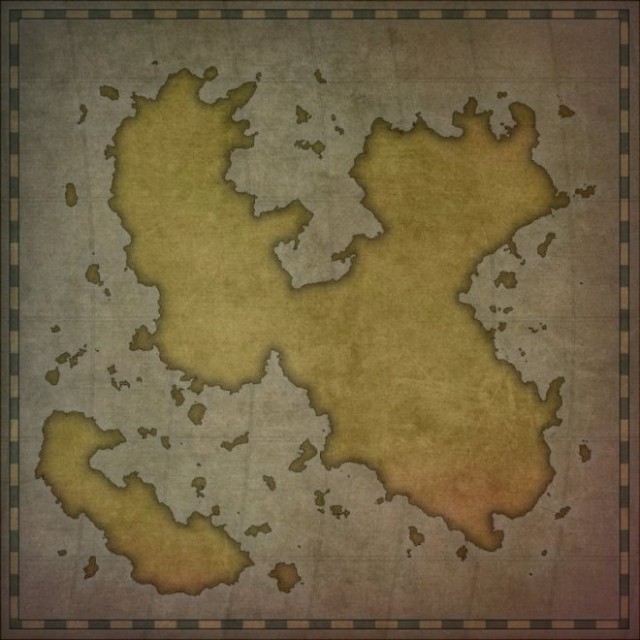
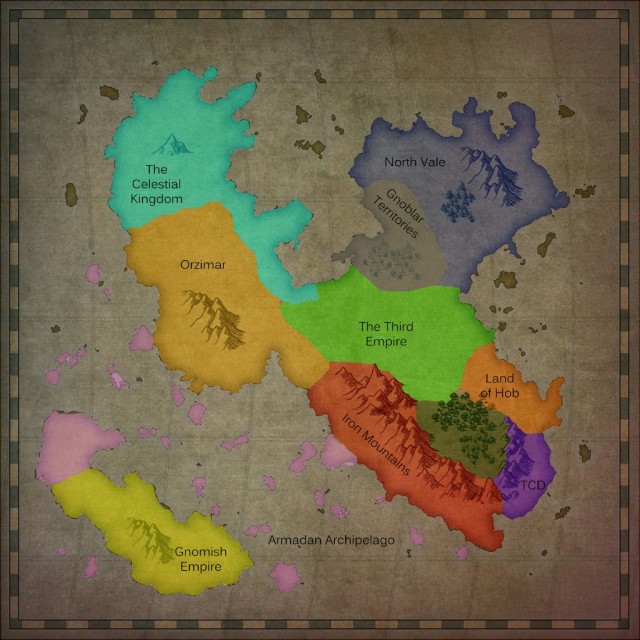

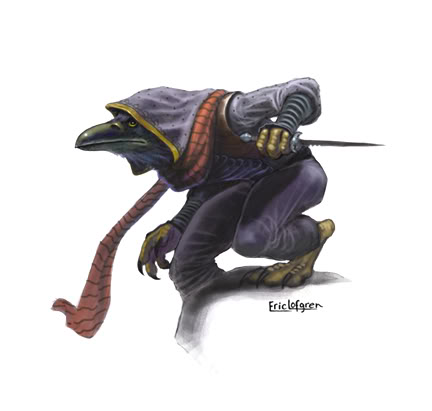
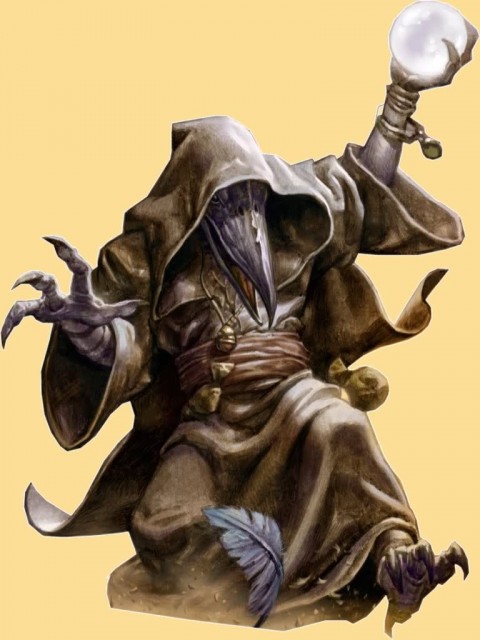

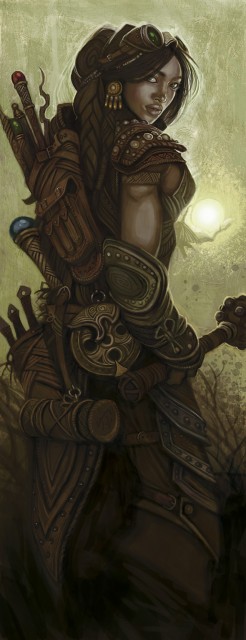
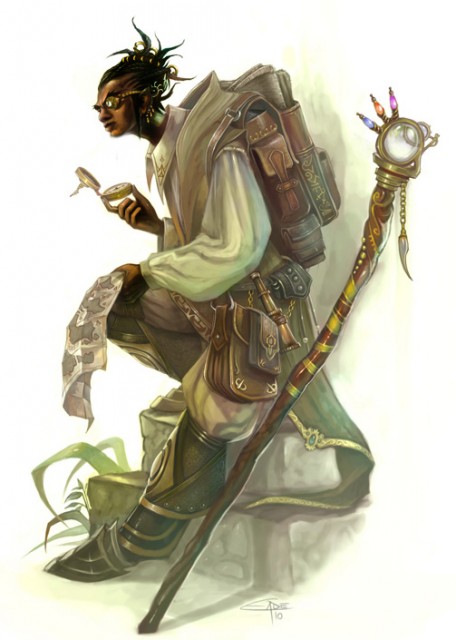
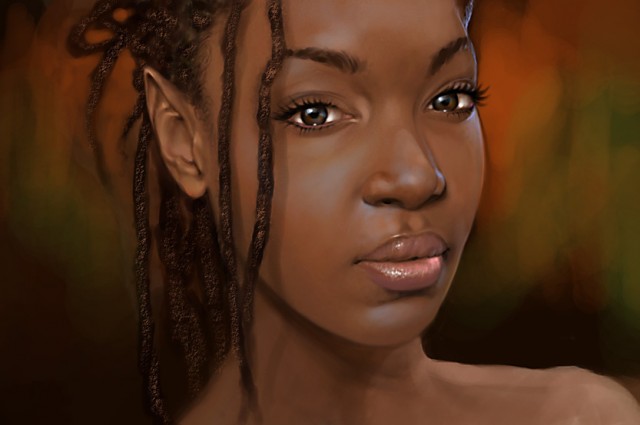
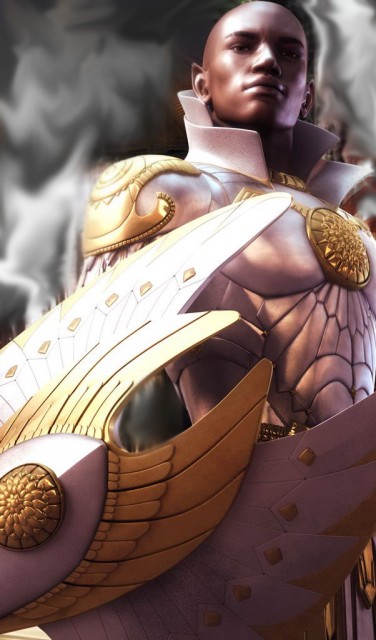
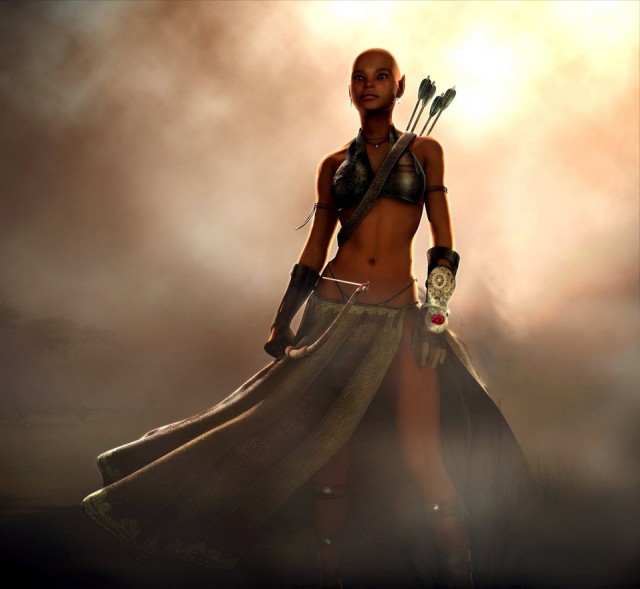
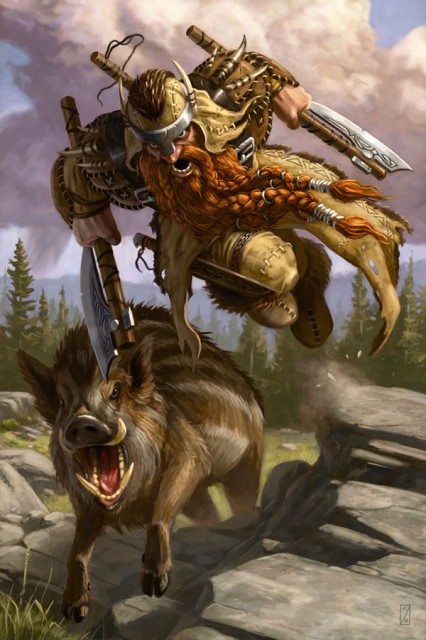
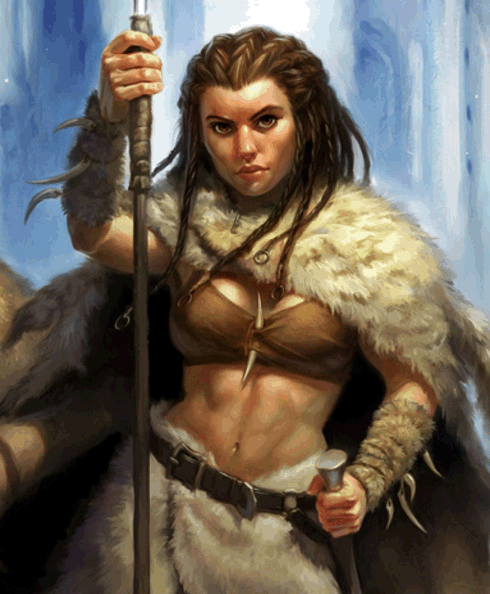
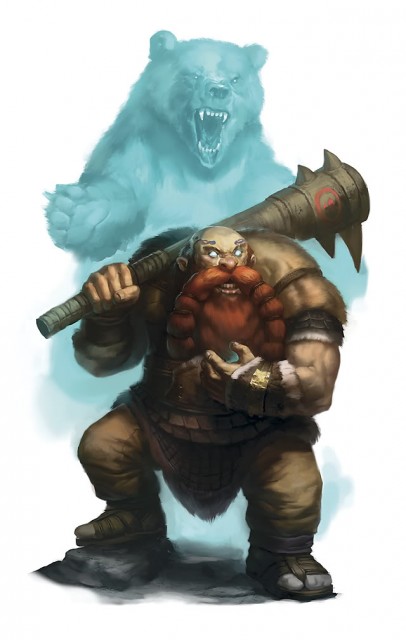
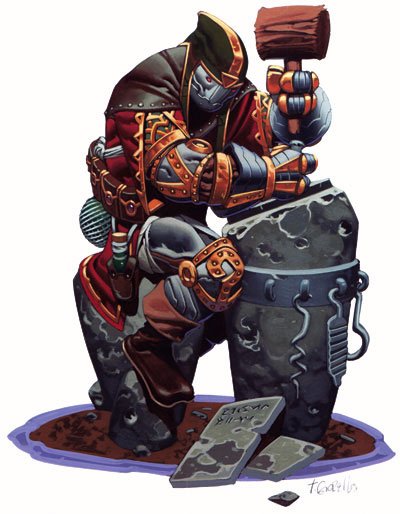

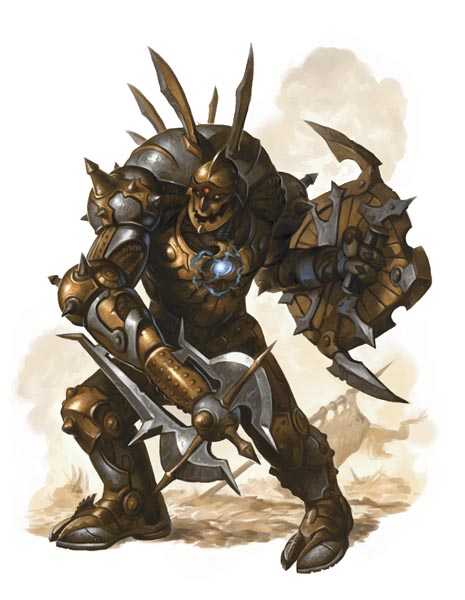
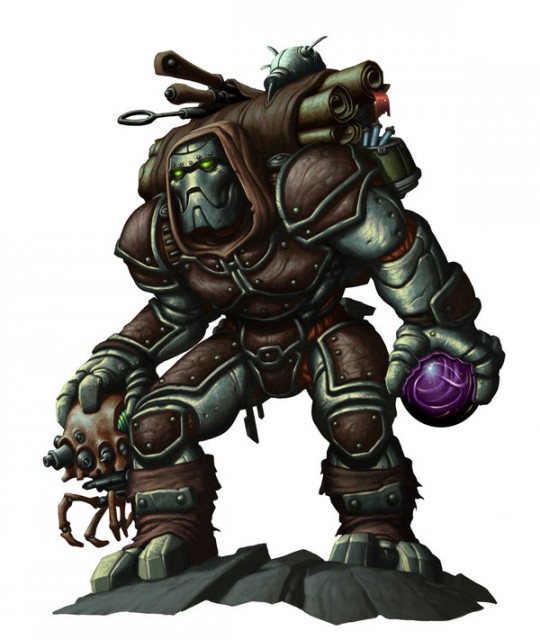
I like this, I think I might use some of the ideas you present for some Fate or Dungeon World gaming. For your windup-dwarf-bots the name Gearforged seems apt. It is in no way originial though, it comes from Kobold Press’ Midgard setting (some neat ideas there).
@ Etienne:
Thanks.
Gearforged is kinda nice but but if it’s from a published setting Kobold Press probably has it trademarked. Which is probably not a huge issue seeing how I’m borrowing pictures that were probably scanned in from legit publications too. :P
I really like all of this, especially the Deep Elves. Recasting the dwarves is also interesting. Just a few suggestions: the scout should probably be wearing more clothes, to fit in with the environment and all that (unless they have some sort of natural camouflage), though I’ll chalk that up to lack of images. For the Mechanites, maybe their externally visible bodies are just shells for some kind of host organism? I could hypothesize that there was some kind of sentient, soft-bodied, native lifeform on the island that learned to adapt left-over dwarf technology (possibly in answer to the wars and conflicts that you allude to). I’m thinking something like the Trill symbionts in Star Trek, but with mechanical bodies instead of symbionts.
For your windups there could be some kind of “alive” Archive that contains spools of dead Mechanos.
Beeing assembled from thousands of (maybe damaged, maybe incomplete) Spools of different Windups, this could be some kind of meta/elder-Guy who takes part by keeping the history of those people and can be asked for advice.
But since it has to query that many spools he will probably be extremely slow. Further it is obviously fixed to a place.
Talking of slow… paper spools will probably make those people seeming pretty slow thinking too. There might be some kind of cache, but when they think deeply about some huge problem and ponder old memories, the probably will take a lot of time for that, what would give them a reputation to be slow amongst other people.
Shrutarshi Basu wrote:
Heh, very true. The scout could use a Repair Her Armor treatment. Granted, I believe the original image had some palms in the distance that I cropped out suggesting a tropical climate, which could potentially excuse the skimpy clothing. But yeah.
Shrutarshi Basu wrote:
That’s a cool idea, but I kinda like them being completely non-organic and possibly not even descendants from organic life. Plus, they’d be scumbag GM’s dream come true. Players cast “detect life” – nothing. They cast “detect magic” – none. Detect traps? All clear. Decide to enter the room: suddenly 20 windups stage left – roll for initiative. :D Not that I would ever do such a thing, but…
Dr. Azrael Tod wrote:
Neat. Kinda like the Infinity Circuits used by the Eldar in Warhammer 40k. :)
Dr. Azrael Tod wrote:
Oh, I actually love this. I imagine them freezing up a bit in the middle of a sentence sometimes while rewinding their spools and “thinking” rather slowly making people uncomfortable and then just continue on as if nothing happened. And you don’t know if they just broke, run out of spring-power or what because there is no progress bar or anything. They don’t have glowing eyes that indicate they are in a working state, and you can’t really hear the spool sounds through the hermetically sealed armor. They’d be awkward as fuck to talk to and a lot of fun to role-play as well. :D
Luke Maciak wrote:
Well, then your players would start to quibble about the definition of a trap. I mean, there’s a bunch of mechanical devices that guard something…sounds like a trap to me. Who says traps can’t be sentient?
But they need some form of short-term memory. Otherwise, I don’t think they could effectively fight back when savage dwarves try to forge new weapons out of them. Maybe they could be really fast thinkers as long as they don’t need to access long-term memory. “Hey, Mecha-buddy, remember when we got attacked by savage dwarves…Oh crap, there we go again.” Maybe they could also use punch-card cheat sheets for some situations. I imagine they could prepare very well to discuss some specific topic, for example.
Somewhat unrelated: Will there be computer science wizards in that setting, too? The Deep Elves already seem somewhat like the Enchanters.
Pingback: Ravenflight Part 2: My Humans are Different | Terminally Incoherent

@ Max:
Good point. I guess some kind of cog-wheel driven RAM is a given with these guys. Otherwise it would be rather difficult for them to function. That and they would have some decent, predictive look-ahead type fetching strategy. I’d imagine they would only lock up when they were surprised with an unexpected change of topic, or something random.
That and stat wise I’d typically give them very low initiative to represent their general slowness to react, which would be offset by fiendishly high hit points (because they are basically walking suits of armor designed to take a beating).
I’ll help you with the name of the clockworck dominion people: Maqinos or majinos (the J is not like the English one, but instead like the Spanish strong gutural sound from “José”). I find the q an acceptable repleacement of the ExTreme Kool LetterZ, as it sounds a little foreigner to the English and a bit like greek (-os suffix), latin or spanish (Q and J) without falling into a commonplace. Mechanites sounds a little clichéd.
Sorry for my English